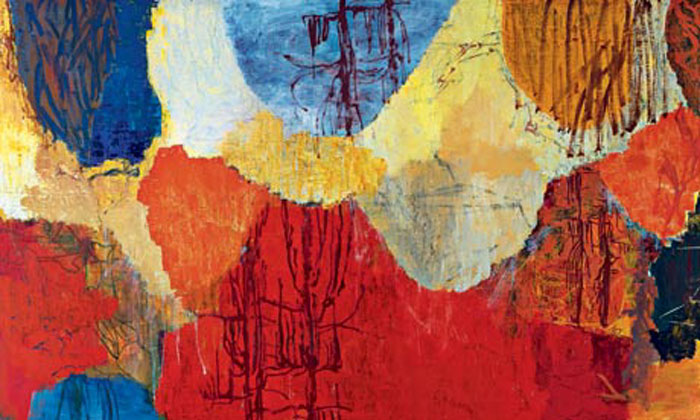Just who is being murdered in The Murder in Finnerup Barn? Painted in 1967, the picture hangs at the start of the Danish artist Per Kirkeby’s retrospective at Tate Modern. It makes for an aptly enigmatic introduction to his elusive art. As any Dane knows, its title – Mordet i Finnerup Lade, in Danish – refers to the notoriously brutal murder of King Eric Klipping, by Marsk Stig and his men, in a barn in Jutland in the year 1286. But there is little sign of any of that in Kirkeby’s abrupt screed of disparate images. There is admittedly some kind of barn or alpine hut, up to its eaves in drippily white painted snow, but the rest is a collage of incongruities – the outline of a flying eagle, an overscaled hiker dressed in eighteenth-century clothes, some join-the-dot minarets and a flurry of polka dots flying through the air like a meteor shower.
For Kirkeby, the real murder victim was the high-minded Danish academic art tradition, with its fondness for civically rousing depictions of ancient historical or classical themes. Presided over by the ghost of Bertel Thorvaldsen – a contemporary of Canova whose immense monumental sculptures occupy an entire museum of their own in Copenhagen – the Danish Art Academy was still a powerful albeit conservative force in Denmark in the 1960s. But Kirkeby preferred to forge links with Copenhagen’s Experimental Art School and the international Fluxus movement, a loose association of artists dedicated to informal gesture and “anti-art”. Diametrically opposed to history painting in the grand manner, The Murder in Finnerup Barn is like a poster designed for the Danish Tourist Board by a dyspeptic Pop Artist. It is a statement of intent – a gleeful parody of academic art, designed to demonstrate its...


